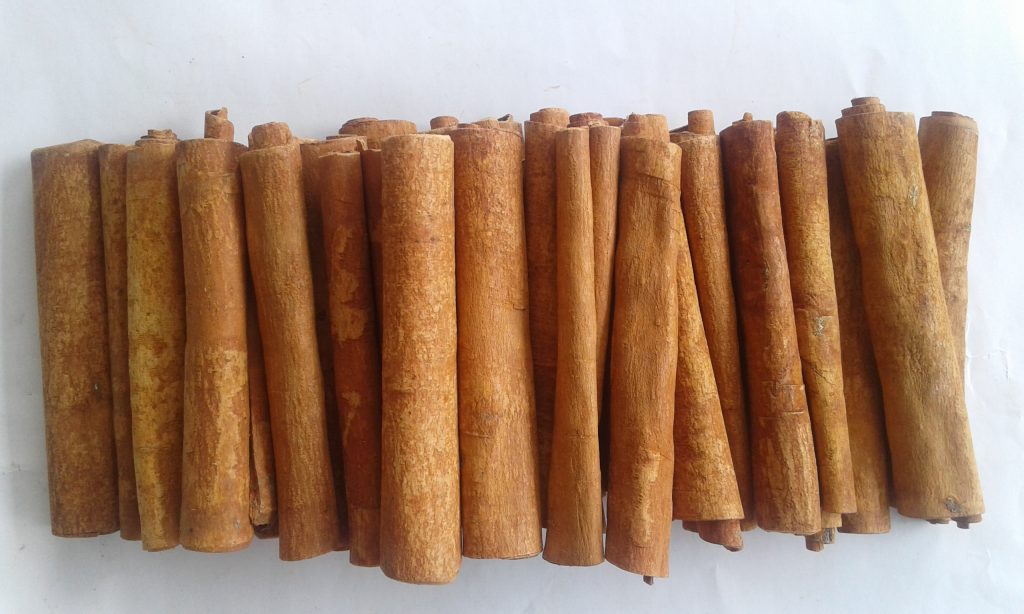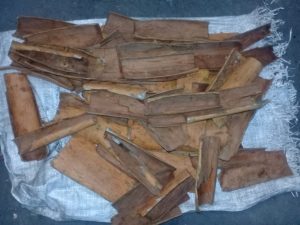From CV. Koma Jaya, Spices, Coffee Bean Exporter present the crops:
Cinnamon (Cinnamomum Verum)

Cinnamon Stick Cut 6 cm-CV. Koma Jaya 
Cinnamon Stick Cut 10 cm-CV. Koma Jaya




Cinnamon is an evergreen tree characterized by oval-shaped leaves, thick bark, and a berry fruit. Cinnamon is cultivated by growing the tree for two years, then coppicing it. The following year, about a dozen new shoots replacing those that were cut. Processed immediately after harvesting while the inner bark is still wet. Once dry, the bark is cut into 5- to 10-cm (2- to 4-in) lengths for sale. The most cinnamon in international commerce is derived from related species referred to as “cassia“, species Cinnamomum Burmannii (Korintje) from Padang, Indonesia. Available on January – December throughout the year.
Cinnamon are used in :
- Mainly as an aromatic condiment and flavoring additive in a wide variety of cuisines, sweet dishes, cereals, snack, and traditional foods.
- Essential oil and principal component, eugenol, is of a golden-yellow colour, with the characteristic odour of cinnamon and a very hot aromatic taste.
Coumarin is known to cause liver and kidney damage in high concentrations, based on this case, the European Union set a guideline for maximum coumarin content in foodstuffs of 50 mg per kg of dough in seasonal foods, and 15 mg per kg in everyday baked foods. Ground cinnamon is composed of around 11% water, 81% carbohydrates (including 53% dietary fiber), 4% protein, and 1% fat.
Grading system divides the cinnamon into four (4) groups :
- Alba, less than 6 mm (0.24 in) in diameter.
- Continental, less than 16 mm (0.63 in) in diameter.
- Mexican, less than 19 mm (0.75 in) in diameter.
- Hamburg, less than 32 mm (1.3 in) in diameter.
Storage :
- Ground cinnamon as well as sticks should be kept in a tightly sealed glass container in a cool, dark, and dry place.
- Ground cinnamon will keep for about six months. It is best to buy small quantities of ground cinnamon as it quickly becomes stale, losing flavor and aroma.
- Meanwhile cinnamon sticks may stay fresh for as long as one till 3 years.
- Dry spices are best stored in their original containers in a cool dark area like a pantry where they will remain dry, away from sources of heat.
- Freezing is not recommended for dry spices.
The shelf life of cinnamon depends on a variety of factors, such as preparation method and how it was stored. The best judge of freshness is your nose. Of course, the shelf life of cinnamon is shorter if it is not stored properly. However, in terms of how long cinnamon lasts, it does not matter too much if it is opened or not as long as it has been properly re-sealed.
Cinnamon Expiration Date (Unopened/Opened) : Cinnamon Sticks last for 2-3 years and Ground Cinnamon lasts for 6-12 months.
Because of its sweet flavor and proven health benefits (yes, studies show that cinnamon is good for your heart !), it is one of the most popular spices in the world.